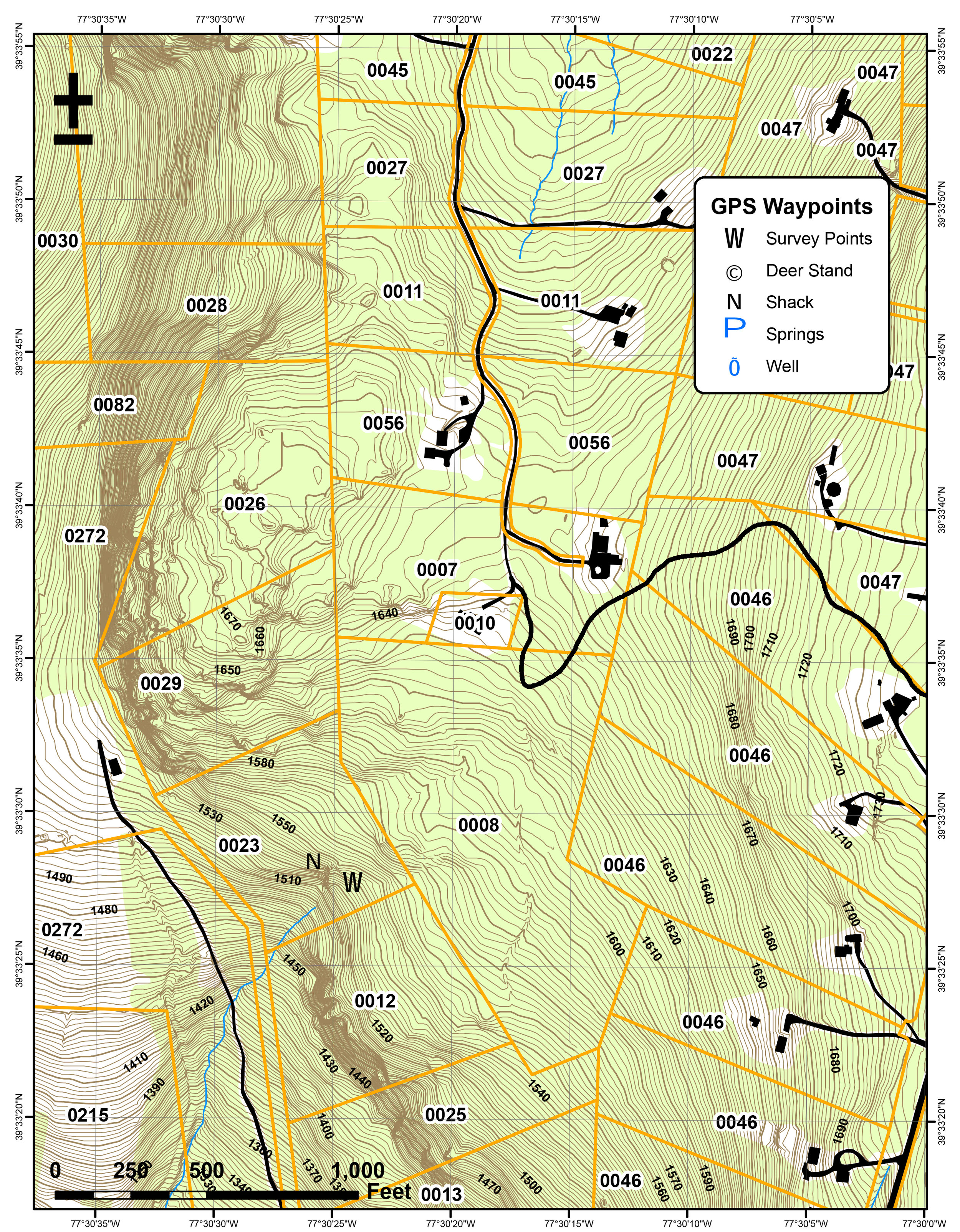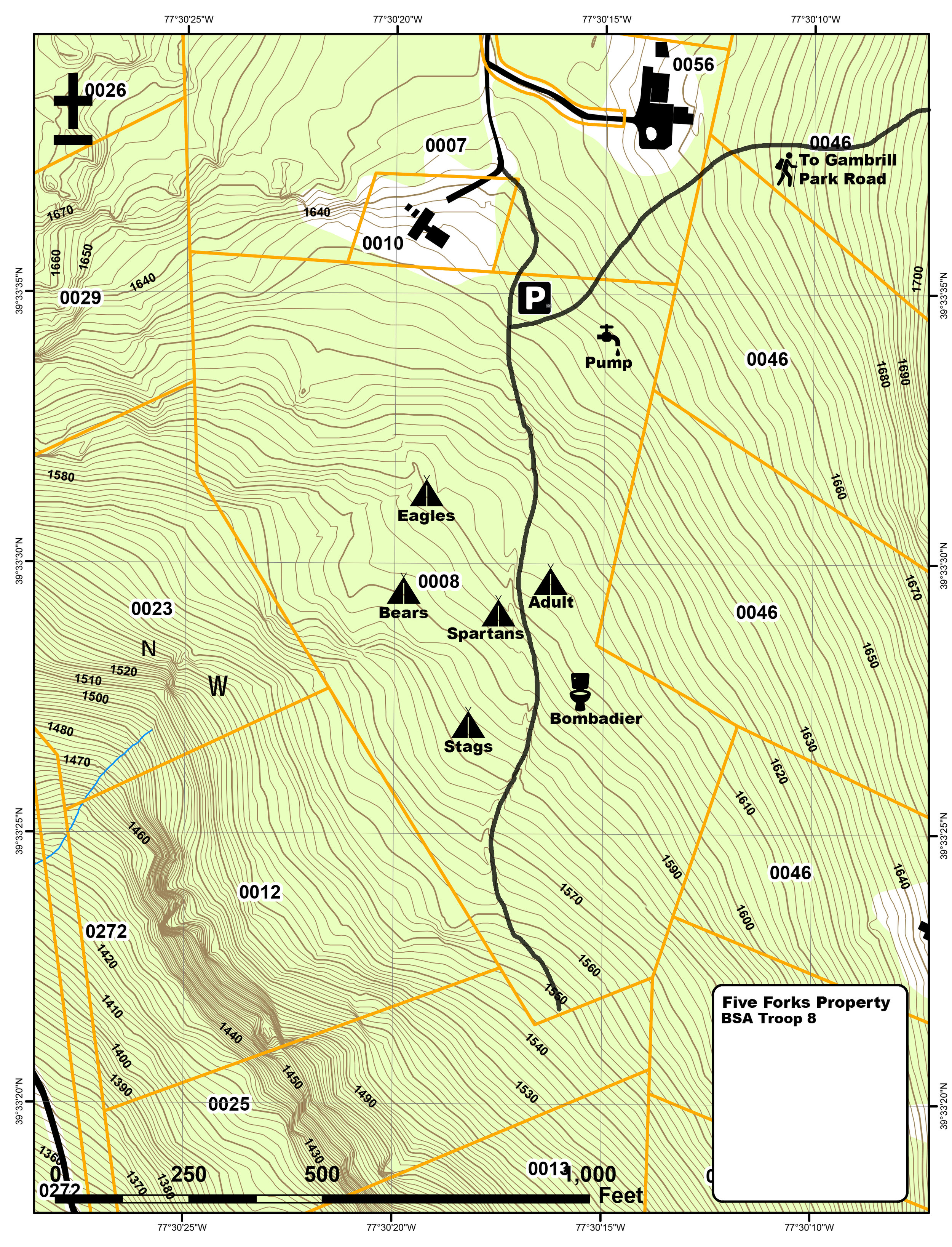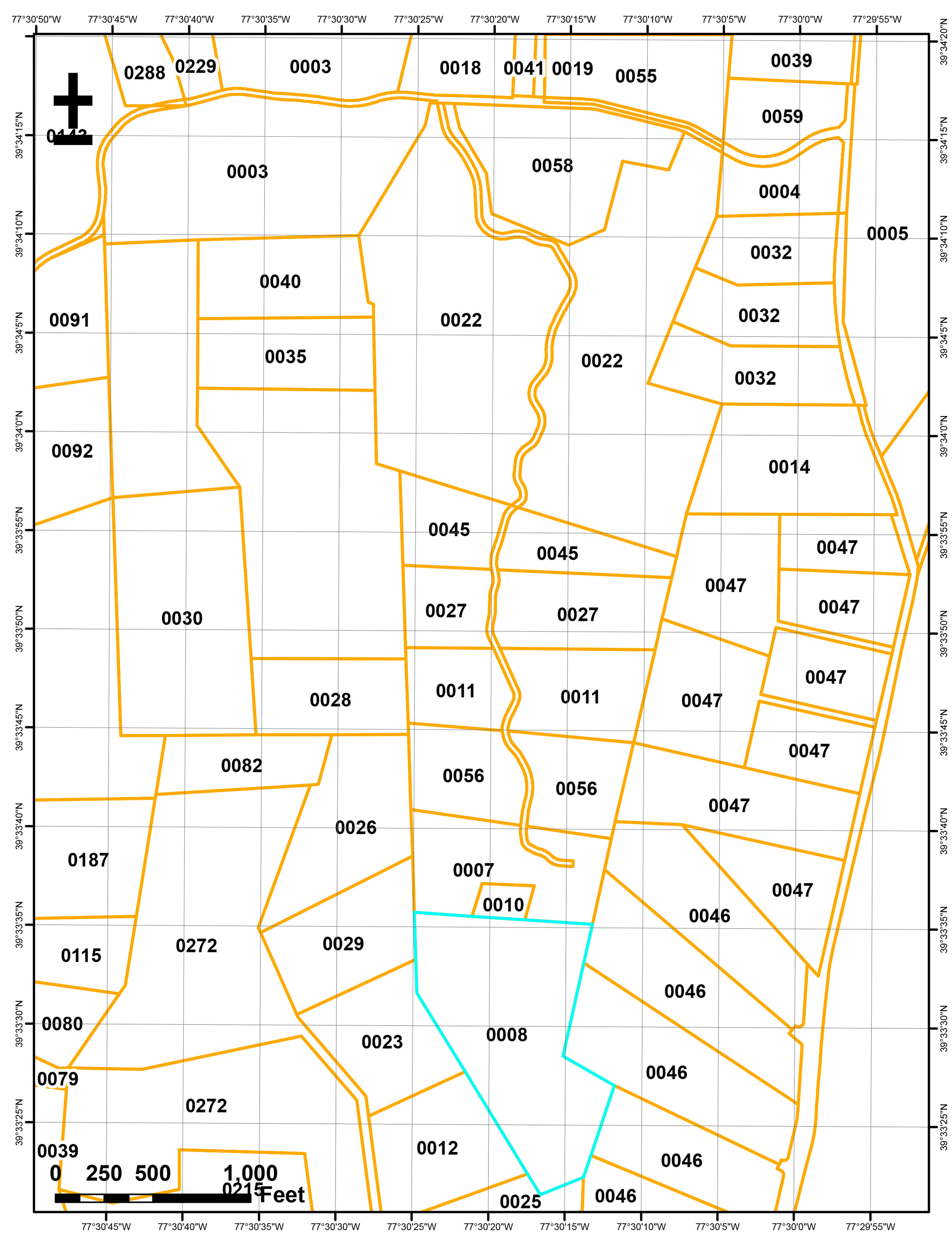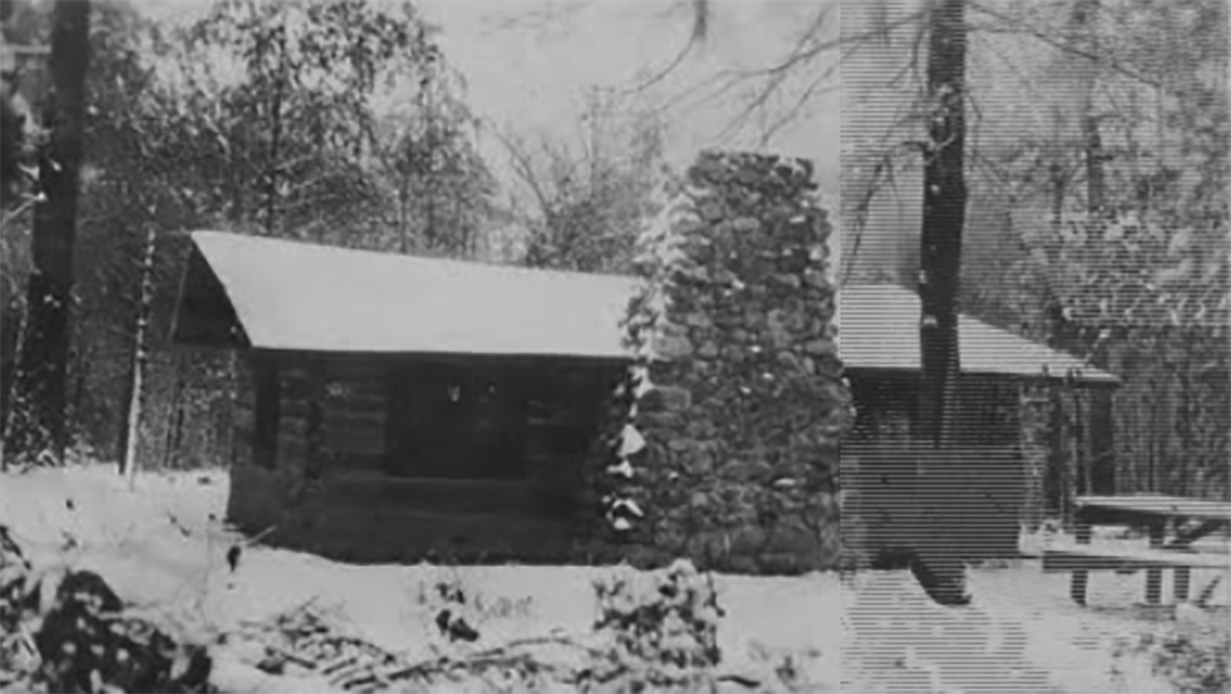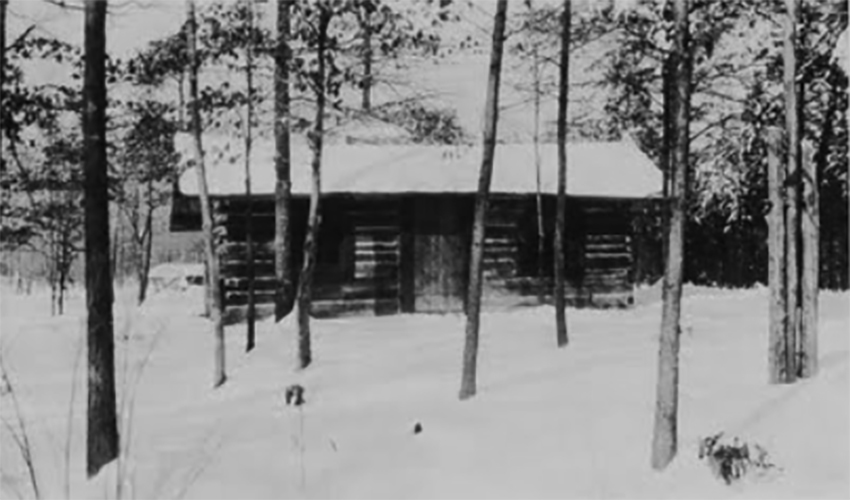Throughout its long history, BSA Troop 8 has recognized a need to have a permanent campground that is convenient to get to yet largely removed from the urban/suburban environment that is the Washington DC region. The property at Five Forks addresses this need and ensures that the Troop will be able to provide for the education of Scouts in the practice of outdoor skills and conservation for many years to come.
Camp at Five Forks
On February 17, 2010, the Westlake Foundation bought a 24 acre property on Catoctin Mountain at Five Forks in Frederick County, Maryland, for use by the Troop as a rural camp. This site replaces the Troop’s Camp Livingstone, which had been in use since 1930.
The property is near Catoctin Mountain Park, Cunningham Falls State Park, and the Frederick City Watershed Cooperative Wildlife Management Area, with easy access to the Catoctin Trail, the Catoctin Furnace, Bob's Hill, Cunningham Falls, and the Appalachian Trail. See our Google map (with driving directions)
Camp Livingstone
In the late 1920’s, Troop 8 began regular camping on a property overlooking the Potomac River called Glymont, just north of Indian Head, Maryland. In 1930, when the property’s owner changed, the Troop began acquiring property several miles away in a wooded area inland, just north of Indian Head. With money earned by the Scouts, additional parcels were acquired, and by 1933, Camp Livingstone, approximately 22 acres of wooded and cleared land was complete. Over the next 16 years, various lean-to shelters were constructed by the scouts on the property, as well as three cabins. A baseball field occupied the one open space. Hundreds of trees were planted, particularly in the wake of a fire. There were some kinds of Troop or Patrol activities at the camp more than half of the weekends of the year. In 1942, a road was cut through the camp to provide access to the munitions plant in Indian Head, isolating several acres on the other side of the road, eliminating the baseball field, and introducing the hum of traffic into the camp. During the 1980s and 1990s, the camp was used less frequently, as alternative camping and backpacking venues came into more common use. The Westlake Foundation sold the property occupied by the former Camp Livingstone in 2004.


